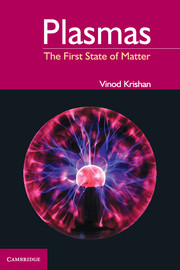4 - The Waving Plasmas
Published online by Cambridge University Press: 05 June 2014
Summary
Introduction
The method of provocation is the easiest way of learning about a system. Provoke it and watch it reacting. The response holds a wealth of information on the nature of the system. One is quite familiar with the example of a pendulum, a simple pendulum, a string hanging vertically with its one end fixed to a beam and the other end carrying a small ball. In the steady state of the pendulum the ball is at rest. When the ball is displaced a little from its resting position and released, it sets into oscillations. It oscillates about its resting point with a period that depends on the restoring force that comes into play when the ball is displaced. The restoring force is the gravitational pull of the Earth. The period is a function of the length of the pendulum and the acceleration due to the gravity of the Earth.
Plasmas are no different. A plasma can be displaced from its steady state. Some of the steady states of a plasma have been studied in Chapter 3 in some detail. A plasma has a variety of steady states and there are as many ways of disturbing them. Plasmas are set into oscillations and for each type of disturbance there is a characteristic restoring force and the corresponding period of oscillation. The restoring forces could arise from pressure gradients, Lorentz and gravitational forces, or even their combination.
- Type
- Chapter
- Information
- PlasmasThe First State of Matter, pp. 88 - 164Publisher: Cambridge University PressPrint publication year: 2014



